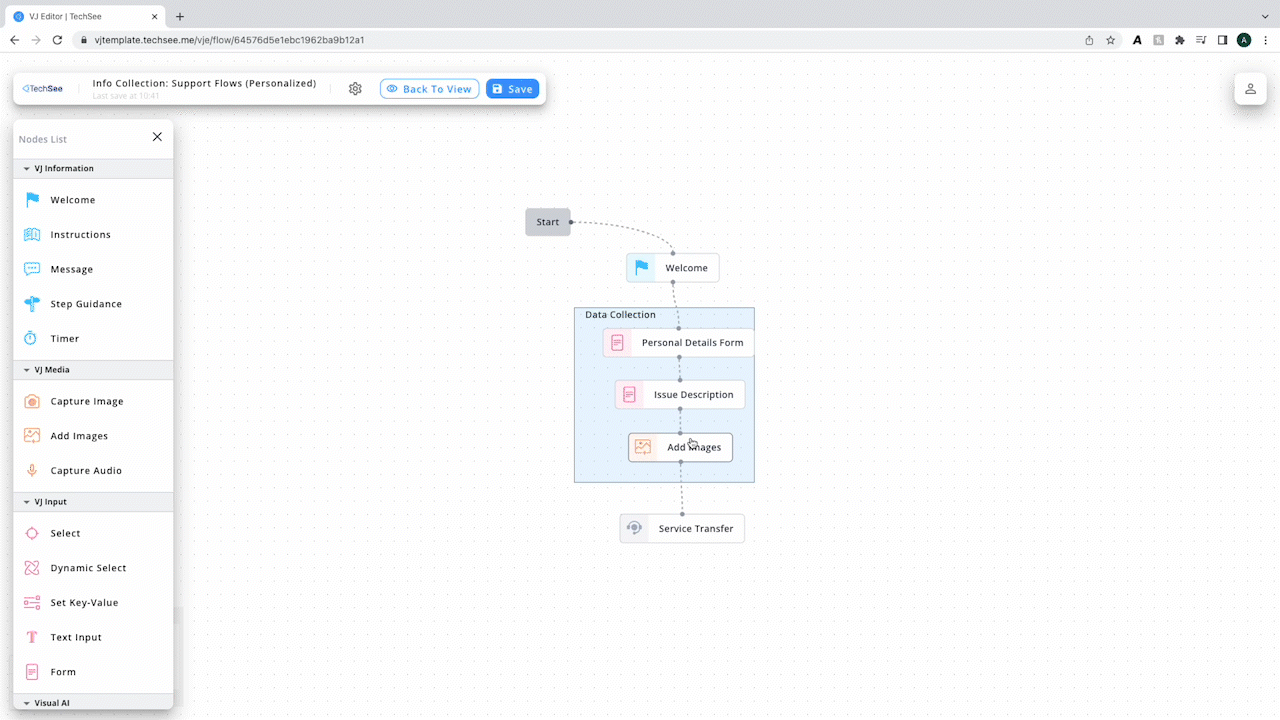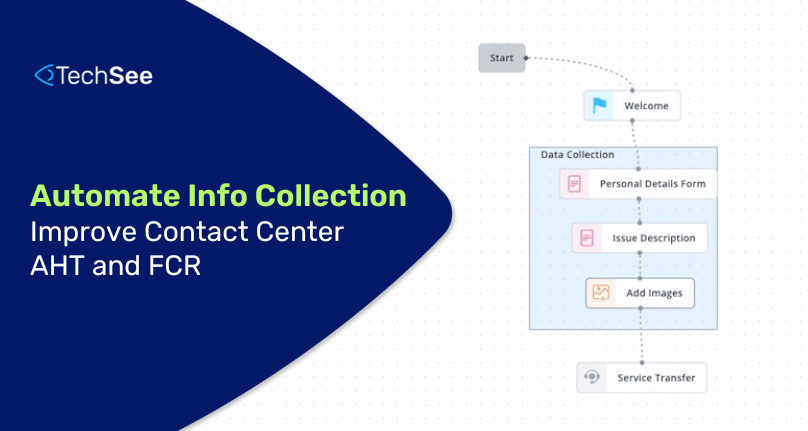Contents
2023 has been the year of efficiency. Across sectors and around the world, enterprise leaders have been carefully managing expenses and streamlining processes. The service industry is no exception. However, improving contact center efficiency cannot come at the cost of delivering a great customer, agent, or technician experience. Automation is the answer to service industry staffing shortages and efficiency requirements. With this in mind, we are proud to introduce the next step forward in contact center service: integrated and automated visual flows.
What is an automated visual flow?
A Forrester Consulting study found that 70% of contact center agents lack access to relevant customer data. This results in longer AHT (average hold time) and MTTR (mean time to resolution), as well as lower FCR (first contact resolution rates). Automated visual flows as part of every service interaction will effectively and conveniently improve AHT, MTTR, and FCR.
An automated visual flow is a short, mobile-friendly flow that guides users through a particular series of actions as part of a service experience. These intuitive flows can be added to any service channel, from IVRs to chatbots, field service dispatch, and email support to improve contact center efficiency.
This post will focus on how automated visual flows can automate the less complex elements of nearly every service interaction.
Automating Contact Center Efficiency: Information Collection
Most customer service interactions include a minimal waiting period. For example, phone support customers wait on hold for a service representative. Similarly, customers contacting support via email or web forms typically wait anywhere from an hour to 48 hours before receiving a response. This ‘hold time’ is the ‘gold time,’ the ideal time to automatically trigger visual flows that collect the data and images representatives need to more quickly and efficiently resolve the customer issue.
Without Automated Visual Flows
Nearly every support ticket will require the agent to identify the customer record and collect issue information. For example, a customer calling in for help with their 5G router would be asked for their:
- Name
- Phone number
- Account info
- Their specific model router
- What LEDs (lights) are lit up on the front of the router
- What color is each LED displaying, if they are persistently on, or if they are blinking slowly or quickly
Collecting this information can take anywhere from 2-7 minutes on a phone call and far longer when using chat or email as multiple messages go back and forth.
With Automated Visual Flows

Step 1: Collect the customer’s information
Step 2: Ask the customer what hardware they have and what issue they are facing
Step 3: Collect sample images of the issue
This information can be easily synced back to the service team’s CRM or CCaaS platform so that the assigned agent can resolve the customer’s issue more quickly and easily. This visual customer and issue information improves AHT, MTTR, and FCR. Furthermore, with Service Transfer, a contact center agent can easily launch a live visual support session with the customer, guiding them to full resolution as needed. Improving contact center efficiency has never been so easy.
More advanced teams can skip Step 2 entirely by using our Visual Intelligence (visual AI) to identify the specific product and visually diagnose the issue. However, we recommend that teams start with basic flows before advancing or optimizing. This initial deployment will allow you to learn from your customers and collect baseline performance data. Your performance data will tell you where and how to optimize and invest further.
Scale up and Optimize with the New Editor!

The Editor’s intuitive drag-and-drop interface allows anyone to easily brand, customize and deploy flows at scale. Basic tasks like collecting information, images, videos, and even logic-based flows can all be deployed without any previous training or even a single line of code. Once your core flows are set up, the Editor’s integrated low-code capabilities allow your developers to expand further with Visual AI, automated guidance, API integrations, and more.
Start Improving Your AHT and FCR Today
To learn more about what visual service automation flows can do for your team, don’t hesitate to contact your TechSee representative or schedule your complimentary consultation today.






